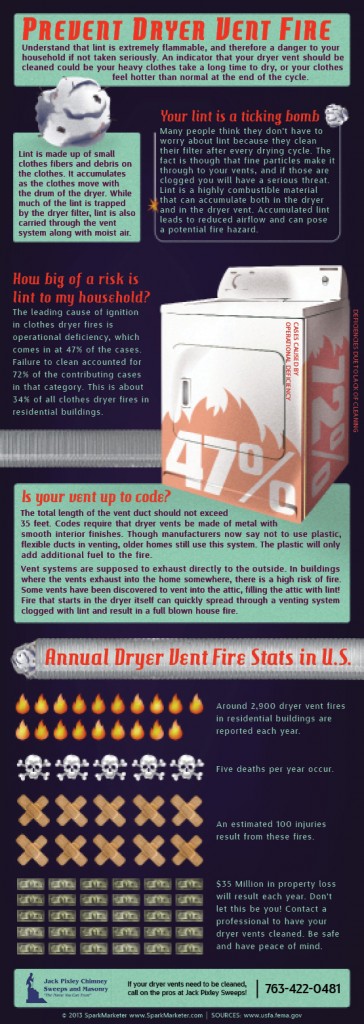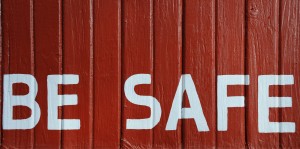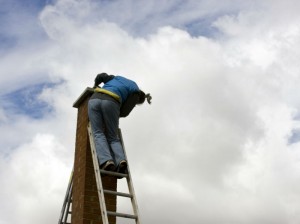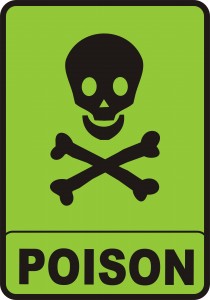It’s very important to keep up with dryer vent cleaning, as the built up lint is a fire hazard that endangers your house and everyone in it. Call Jack Pixley Sweeps to schedule an inspection and cleaning of your dryer vents to help you maintain a safer and more efficient dryer.

If you have any questions or would like to schedule an appointment, please give us a call! We look forward to providing you with a lifetime of high-quality, professional services!

By ensuring proper care and maintenance for your chimney, you are adding more years to its life and increasing its functionality.
In chimneys as in life, it’s always worth thinking and talking about the future, and making sure you’re doing everything you can to ensure health, longevity and happiness. Your chimney is an important part of your home — it’s working hard, every time you have a fire, to carry dangerous gases and byproducts up and out of your living area, and protecting the building materials around your fireplace or stove from the high heat produced by that fire. A chimney can also be an expensive thing to tear down and rebuild, so focusing energy on protecting and preserving it is always a good call.
Wondering what you can and should do to extend the life of your chimney? Jack Pixley Sweeps techs are always glad to help our clients avoid headaches and get the most enjoyment possible out of their heating system.
Don’t Skimp On Regular Maintenance
We say it all the time: The best thing you can do for your chimney system (and your long-term and short-term enjoyment of it) is to diligently keep up with regular maintenance.
Annual chimney inspections are important — not only are Jack Pixley technicians able to make sure that your system is venting properly and doing its job effectively, but we’re also able to catch small problems early and make the proper repairs, before those small problems become large, potentially destructive issues.
Regular chimney sweeping is just as important. Creosote and other deposits build up in your flue as you use your appliance, and a dirty chimney can lead to a mix of short-term and long-term problems. Heavy creosote can block your flue and inhibit your chimney’s ability to vent, allowing dangerous gases to enter your living area. It can also lead to a chimney fire that severely damages your flue liner, even your chimney (or in the worst cases, your home) itself. Acidic deposits can also wear at your flue liner over time, leading to worn joints, cracks and gaps.
One of the key things we’ve learned over more than three decades of servicing chimneys in the greater Twin City area: Keeping up with those regular maintenance appointments will make a big difference in the longevity of your chimney.
Be Diligent About Moisture Intrusion
Your chimney system was designed with built-in protection against water intrusion. Your chimney crown is there to divert rain and snow away from the flue. Your flashing is there to keep water from getting into the joints where your chimney and roofline meet. Your chimney cap is there, in part, to help protect your flue opening from moisture intrusion too. Keeping an eye on all of those key areas of protection is worthwhile.
Jack Pixley technicians will always check those components during your annual chimney inspection, but in between inspections, if you notice an issue — a chimney cap that’s come off in a storm, or a part of your flashing that’s pulled up — give us a call. Repairing those issues quickly is important, since chimney leaks can quickly lead to considerable damage.
If you want to be particularly proactive in protecting your chimney system against moisture intrusion and damage, we recommend having us apply masonry water repellant, which helps your masonry deflect water and can significantly lengthen its service life.
Use Smart Burning Practices
A really important thing to always keep in mind: The right fuel for your wood-burning fireplace or stove is seasoned or kiln-dried cordwood, and only that. Burning green or moist wood can create immediate and long-term problems, from increased smoke and staining now to the development of dangerous Third Stage Creosote down the line (which is extremely combustible and extremely difficult to remove). Burning trash, treated wood or plastics can allow toxic gases into your living area, too.
Stick to the right fuel, and it’ll help you enjoy your fires now, and keep your chimney healthier in the long run.
Do you have any questions about how to best care for your chimney system? We’re always glad to help. Give Jack Pixley Sweeps a call!
The Proper Way of Removing Ash from Your Fireplace
There are many things you can do with ash; it’s not just dirt in your fireplace. It can be used in growing and nourishing plants. Artistic people even use it as replacement for charcoal in making beautiful drawings. However, these things still need to be done with caution because ash can also be harmful to the body. Not everyone’s immune system can tolerate the toxins that are in ash. These toxins in the ash that can trigger a dangerous cold for people with sensitive noses and even an asthma attack in worse cases.

Removing ash in a timely manner also cuts down on the dust in your indoor air.
If you can’t find a particularly good use for ash, it is better to throw it out than to let it accumulate. This is especially true in the fireplace. That’s why it’s important to know how to properly dispose of ash. My company, Jack Pixley Sweeps will walk you through the things that will be done in removing ash from your fireplace.
Where there is Fire, there is Ash
Ash results from the burning of combustible materials. Wood, what we usually use in a fireplace, is one of many examples. Ash stays in the firebox to either help re-ignite flame or simply cool down and be swept out. It can be very easy to remove ash if you know what you have to do, but it can be extremely challenging for those who have no idea what they’re doing. To address this, Jack Pixley Sweeps has devised a well laid out plan to help lessen the trouble of properly removing ash in your fireplace. It is a step-by-step process that is preferably done by a professional sweep so that bigger problems are prevented.
The Process
The first step is to prepare your metal trash bin and dust pan. Metal is used as a precautionary measure because there is still a chance that pieces of coal will be hidden in the ash and it could burn through other materials if you’re not careful. Carefully slide the ash into the dust pan and make sure that you can properly remove the ash without it touching the floor. Take note that the ash needs to be cool before you do this to prevent little bits of charcoal from setting off a fire. Once it’s in the dust pan, transfer it into the metal trash bin, seal tightly because the lack of oxygen will also help put out coals just in case, and place outside your home.
Most of the time it is not necessary to totally remove all the ash. If you are constantly using your fireplace especially during winter, we suggest you keep about an inch thick of ash so that you won’t have trouble re-igniting the flame.
Like we said before, complications can be avoided when you call on a professional. Our CSIA-certified chimney sweeps are outstanding in both chimney sweeping and fireplace maintenance. We guarantee that our services are worth every penny you spend. Jack Pixley Sweeps: “The name you can trust!”
Improper Flow
The most important job of your chimney is for warm air come into your home and cold air to escape. Not only is this interchange important, but a clean chimney, that is well-maintained will also filter out most harmful gases. If anything gets inside your chimney and interrupts or diverts air in a way that is out of balance – your health and your home could be at risk.

In order to bring the right air in…at the right balance, you cannot let anything blocking the air to remain. Annual maintenance of your chimney, keeps channels open.
There are many reasons why a chimney gets too much draft. It could be due to a clogged chimney flue that’s filled with creosote. It could also be caused by other objects or even animals that make their way into the flue. Or it could also be because of poor chimney maintenance. It could be many other things. It’s important to solve this problem right away because of health and safety reasons. This can help lessen the chances for harmful toxins from entering the home and for it to safely make its way to the outside of the house without having to worry about fire or dangerous chemicals in the air.
You’ll know when there’s a draft when there is little amount of heat produced by the fire in your fireplace. Another basic observation is a distinct smell lingering inside or air entering your home through the firebox. Here at Jack Pixley Sweeps we make sure your home is cared for in the best way possible; with excellent services and licensed CSIA Certified Chimney Sweeps.
The Symptoms
- Persistent smell inside the home
- Difficulty in starting or keeping the fire despite using seasoned wood
- Smoke spillage
- Not enough heat
The Remedy
Draft in the chimney can be solved by doing four things:
- First, what our people would usually do is to inspect your chimney. This can help them know what equipment to use, what other problems might be occurring and why draft existed in the first place.
- Second, thorough cleaning/sweeping of the chimney is a must. This procedure will remove draft inside the chimney, providing unrestricted air to properly flow.
- Third, sealing the leaks in your chimney can also be a good solution. You know how water can easily destroy the masonry walls and bricks in your chimney thus causing draft to happen and mold to form.
- Lastly, is to have a chimney cap installed. This can keep out animals, birds and debris from accumulating in your chimney.
If your home has a chimney, you’ll have to have it cleaned sooner or later; it’s recommended that you have it done yearly at the very least. The National Fire Protection Association (NFPA) and Chimney Safety Institute of America (CSIA) classify chimney inspections into three categories: Level 1, Level 2, or Level 3. Each level of inspection covers specific items depending on the equipment and how it is vented to the outside of your home. Taking an in-depth look at all three levels will give you a clearer understanding of what’s completed during each and how each subsequent level builds on the work completed during the previous level(s).

Having your chimney inspected and cleaned annually helps minimize any safety risks and maximizes performance.
Levels of Inspection
1.Level 1 – these are completed during a routine chimney cleaning and, as such, should be carried out annually. This more routine level of evaluation is the recommended course of action when the conditions of use have not changed over the past year. These inspections are limited in scope to the portions of the chimney’s exterior and interior that are easily accessible as well as the portions of the fireplace and flue that are readily accessible. The technician will look to gauge the condition of the flue and chimney structure as well as your basic fireplace installation and connections. The technician will also check to make sure that the chimney is free of obstructions and combustible deposits.
2.Level 2 – these are more detailed and thorough than the previous level and are recommended either when the conditions of use have changed during the past year or when a Level 1 inspection revealed an issue that warrants a more thorough inspection. A few notable issues that may call for a more in-depth inspection are homeowners opting to convert their traditional fireplace to a gas unit or when an event has occurred that could have compromised the chimney in some way (e.g., chimney fire, earthquake, or foundation settling). It’s also recommended upon the sale or transfer of the property. These inspections include everything a Level 1 inspection would include as well as the inspection of accessible areas of the attic, basement, and crawlspace and a video evaluation of the inside of your chimney.
3.Level 3 – these are the most in-depth of all the inspection types and are conducted after either a Level 1 or Level 2 inspection has revealed a major issue in parts of the chimney and/or flue that are not easily accessible. These inspections include all of the areas covered in Level 1 and Level 2 inspections as well as inspection of otherwise concealed areas to further investigate known or suspected problems. Because certain portions of Level 3 inspections require some sort of demolition to, within, or around your home, the technician will discuss this work with you prior to beginning anything.
That’s a lot of information to pack into one blog. The information is, however, extremely important. Understanding the general scope of work required with each level of inspection is critical to being an informed homeowner and consumer. We want all of our customers to be pleased with the work we do and not to be blindsided by the costs that go along with it. We wish you a happy and safe holiday season.
Creosote Is Dirty And Dangerous
Most of the time, when chimney professionals like Jack Pixley Sweeps bring up the subject of creosote, we’re talking about fire safety. And there’s a good reason for that: Excessive creosote buildup — particularly if those creosote deposits develop into second or third stage creosote — can lead to a serious fire hazard.
But that’s not the only reason creosote buildup is dangerous, and why regular chimney sweeping is an important part of safer chimney use. Creosote itself — and the various chemicals that make it up — has been shown to be toxic.

Creosote exposure can cause skin irritations, as well as breathing difficulties.
Creosote Development
Several different materials get dubbed creosote, including the dark liquid used to treat commercial lumber materials like railroad ties. The creosote we’re talking about is a chemical deposit that results from burning wood in a heating appliance. Gases rise in the chimney connected to that appliance as the wood burns, and the cooler flue causes condensation, resulting in creosote build-up.
The coal tar creosote used in wood treatment and the creosote in your flue do have something important in common, other than their descriptor: People should avoid prolonged direct exposure to either, because both can be dangerous.
Short-term and prolonged exposure to the chemicals in creosote has been shown to result in an array of health issues, from skin and respiratory irritation to stomach pains and a potential worsening of asthma symptoms, according the Agency for Toxic Substances and Disease Registry.
Limiting Creosote Exposure
Exposure to chimney creosote can happen in different ways. Airborne particles can be breathed in. Chemicals can be absorbed through the skin or — a particular concern with kids — orally, if fingers that came into contact with creosote were absent-mindedly put in your mouth.
Limiting exposure to creosote starts with limiting the development of creosote to begin with, by burning the right materials. Burning green or wetter wood leads to a cooler fire and more creosote — and burning anything else, like trash, can contribute to creosote build-up and give off toxic chemicals, depending on the material.
Sticking to burning kiln-dried or seasoned cordwood only is your best bet. It provides the best, cleanest burn, and is smarter to use both short and long term.
The other key step is having a professional chimney technician clean your flue regularly. During a chimney sweeping appointment, Jack Pixley Sweeps technicians will remove creosote deposits from your flue, using specially designed tools and vacuums to make sure the mess is completely confined and removed. Our technicians are trained to safely handle and safely dispose of creosote, so you don’t have to come into contact with it.
If you want to know more about creosote — and limiting and removing it from your chimney system — give Jack Pixley Sweeps a call. We’re always happy to help our clients!






